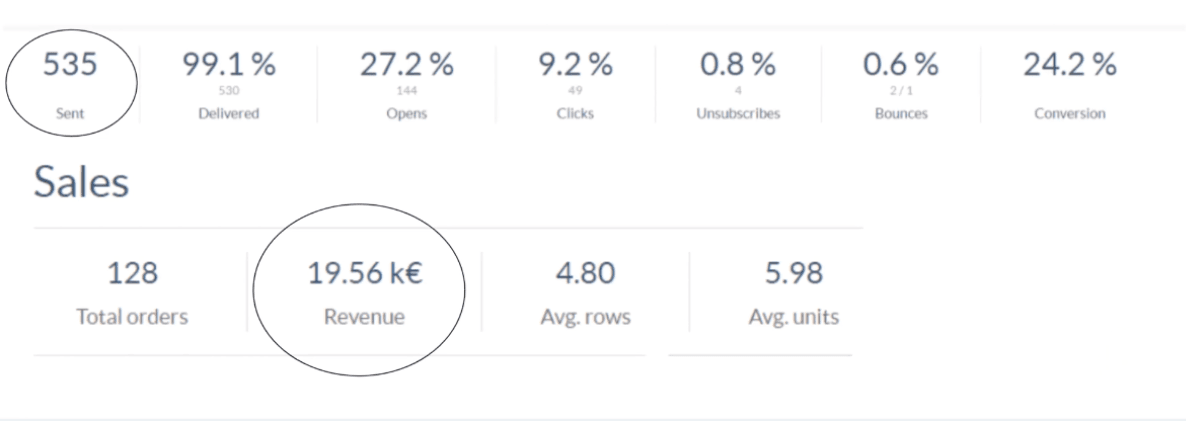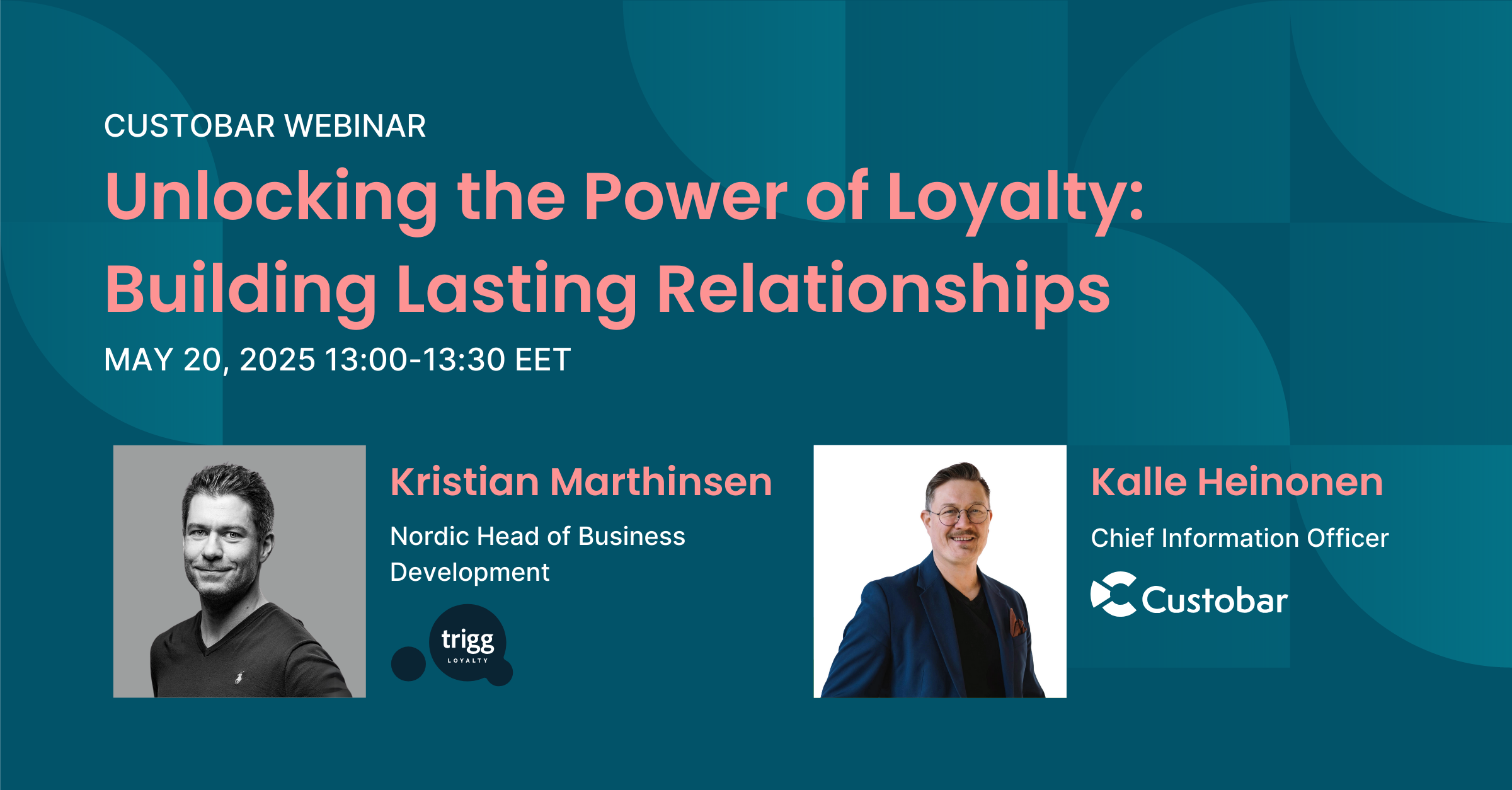Marketing Automation is used primarily to automate sales and marketing activities in order to increase revenue and maximise efficiency. However, used strategically, Marketing Automation can do so much more. Especially in the way your company is perceived and experienced by your customers.
In this article, the following topics will be covered:
What is meant by Marketing Automation?
Marketing Automation refers to marketing technologies that automate marketing communications across multiple marketing channels. These technologies are used to automate email, SMS, push, Facebook, and Google Ads campaigns.
When Marketing Automation is being defined, the emphasis is usually on its benefits to marketing and sales teams and overall business success. However, used strategically, Marketing Automation systems enhance customer experience and hence, customer engagement, while growing your company’s revenue - exponentially.
Really. In this article we will reveal a real-life example of how our client makes an additional half a million euros per year by just one simple and common automation.
5 digital marketing trends that call for Marketing Automation
The necessity for Marketing Automation is due to 5 changes in digital marketing trends:
- The death of third-party cookies. Digital marketing used to be largely based on the use of cookies. When the cookies aren’t fired at all or they are gone faster than before, there is a need to gather and utilise so-called first-party data without cookies. This can be done by asking for customer identification, for example an email address, in all possible touch points: website, mobile app, customer service and physical store. Once a customer’s identity is known, data can be gathered and that data can be utilized for customer segmentation and marketing personalisation.
- Excessive amounts of available customer data scattered across systems and channels. Customer data is often scattered among various systems and software. Scattered customer data prevents the formation of a unified customer experience. Furthermore, customer touch points that are vital for any business remain missing. While Marketing Automation systems may function as platforms that integrate customer data from various touch points, they can seldom do that on their own, without the help of a Customer Data Platform (CDP). Without CDPs like the Custobar CDP, in which a Marketing Automation system is an integral & inbuilt part, Marketing Automation systems may have only some potential of integrating and enriching customer data.
To put this more simply: There is so much customer data available that it is hard to put it in the best possible use without the proper tools. The best tools make creating customer segments and audiences easy while accessing all available customer data.
- The pressures to drive profit. Measuring ROI sets great pressures for marketing organisations to create more efficient and profitable mechanisms. Rapid campaign cycles are not enough. They need the help of automated systems that drive sales 24/7 all by themselves.
Note that the most sophisticated and versatile Marketing Automation systems, such as the Custobar CDP and Marketing Automation system, actually show campaign based sales in amounts of money from both online and offline (physical stores/locations) sales.
- The importance of driving customer loyalty. In turn, customer loyalty is largely driven by products and services made easy. Amazon is a great example of this. All obstacles to buy have been removed or minimised. In principle, getting a product at your doorstep by the next day is one click away.
- Our customers want relevance and personalisation. They want content on products and services that resonates with them, and they want a good customer experience. Utilising customer data to create customer segments is vital for targeted marketing communications.
The purpose and benefits of Marketing Automation

Marketing Automation increases revenue and maximises efficiency. Even more importantly, it also enhances customer experience and consumer-to-business relations. Our customers are accustomed to targeted and personalised messages. They remain unengaged with mass marketing messages informing them about this month’s offers and discounts. The better the campaign resonates with them on an individual level, the better the campaign revenue.
In practice, Marketing Automation:
- Enables scalable communications in real-time in a way that is possibly only to technological solutions.
- Brings passive sales. Your marketing processes and multifunctional omnichannel campaigns are at work 24/7.
The most common examples of Marketing Automation in B2C
Automated marketing messages drive sales and increase customer engagement and customer loyalty. Here is a list of the most common automations in consumer businesses:
- Abandoned cart. These messages are sent to re-engage and remind customers who put items in their shopping carts but didn’t complete the checkout process. They make a real difference in sales (see our half a million per year example below).
- Abandoned browses. Browse abandonment messages re-engage and remind customers who browsed your products and services, but never placed anything in their shopping cart. They are a way to capitalise on a customer’s intent.
- Newsletter subscription confirmations, also known as opt-in emails. A single opt-in email confirms that a person is successfully subscribed. Double opt-in confirmations require subscribers to confirm their signup. They function as confirmations that the subscribers are real people, not spammers.
- Welcome email sequences. These may function as newsletter subscription confirmations. The sequence consists of both reminders and reasons why being your customer is worth it. First messages vary based on whether the customer already made a purchase or not, and whether the purchase was made online or from a physical location (offline).
- Post-Purchase follow-ups. Post-Purchase emails are not transactional messages but rather extensions of ecommerce marketing. They are sent after the customer has received their order, and they are all about keeping the brand fresh in people’s minds for future transactions.
- Re-Engagement emails and SMS messages are sent to activate passive or inactive customers. If someone was once a loyal customer but has not made a purchase for, say, 100 days, these messages are a good idea to try and re-engage them. These messages can be automated as well.
- Loyalty programmes can be supercharged by marketing automation. Studies show that companies excelling in customer loyalty retain 70% of their customers, whereas ecommerce businesses on the other end of the spectrum struggle to maintain 20% of their customers making consecutive purchases. By personalising and automating marketing messages to enhance loyalty programmes, revenue can grow up to 30%.
- Cross-selling and upselling emails and SMS messages. An example of cross-selling would be to market a good sound system to someone who just bought the best premium 4K Ultra HD TV. An example of upselling is, for instance, selling a monthly ink cartridge package for printer buyers. Both strategies utilise the fact that acquiring new customers is far more expensive than nurturing the already existing customer base.
- Reminder emails are friendly ways to remind customers to do something.
- Happy birthday messages are always a nice surprise, more so the older you get (or are they? Is there such a thing as too old?). They are a way of boosting your brand and refresh your customer’s memories about your existence. A variation of this would be to celebrate milestones such as yearly anniversaries of your customer relationship. Especially, if you do not wish to learn your customer’s date of birth.
There is much to discuss with each one of the above, but let’s look at some numbers instead. The numbers are from a real client of ours. They represent the results of automated abandoned cart messages over a two week period of time.

The abandoned cart messages were not expensive to send. The average profit was 36,56 euros per message. On a yearly level, additional sales are 510 000 euros.
More Marketing Automation examples
The examples above were mostly on Marketing Automation in relation to **email marketing**. Although some say that email marketing is so last season, it should be prioritised for a greater ROI. B2C marketers who prioritise email marketing average an 89% higher contribution to revenue compared to their competition who do not.
Still, there are also other effective ways to automate marketing:
- SMS marketing automations. SMS messages are a marketing opportunity you don’t want to waste. Done correctly, they have high engagement and conversion rates. They also enhance customer experience.
- Push messages / push campaign automations. If your business has a mobile app, you should definitely automate targeted marketing campaigns and communications to your customers as in-app and native push messages to their mobile phones.
- Google Ads marketing automations.Google Customer Match is a feature in the Custobar CDP and Marketing Automation system for reaching those customers who don’t want email or SMS messages. It’s a means for targeting Google Ads in a personalised way. It can even turn audiences similar to your already existing customers into new customers. See what Google Customer Match is and how it works
- Facebook ads automations. Since Facebook gets less and less cookie data, it is vital to have another system in place for targeted and effective Facebook ads that drive sales and bring revenue. Find out how to utilise customer data when targeting Facebook ads.
- Direct mail marketing automations. In our era of digital marketing automation, it is possible to combine AI and automations to printed marketing materials and direct mail marketing.
Marketing Automation’s life cycle aka strategies for sustaining success with Marketing Automation
Marketing Automation is a must for every business, from B2B to consumer businesses, and including businesses that only exist in physical locations with a website, with no web store or online marketplace. However, having a Marketing Automation system in place is nowhere near enough. Focus should be shifted from manual campaigning to profitable personalised and automatised customer communications. This means continuous development in the ways the chosen Marketing Automation system is put into use.
Do. Analyse. Optimise. Rinse. Repeat.
If your company is using a Marketing Automation software or system mainly for mass messaging, you are missing out on a significant amount of revenue. An example on point is the abandoned cart message that brings our client an additional half a million euros per year. There are 3 steps to utilising Marketing Automation:
- Choosing the right tool/system/platform.
- Implementing the chosen Marketing Automation tool.
- Ongoing development in using the tool/system.
It is step 3 that is too often missing. It’s like having that best premium 4K Ultra HD TV in your living room but watching Netflix on your old smartphone with its 4,5 inch (less than 15 cm) screen. If you think that implementing a Marketing Automation system is a project or an IT acquisition, you are in danger of remaining stuck in step 2.
Implementing the right Marketing Automation tool is an investment. However, investing in implementing good ongoing development practices in utilising the implemented tool is exceedingly more important. It is only on step 3 that your business reaps the benefits of these investments.
Let’s take a closer look at the benefits from moving on to step 3.

The question is, why do so many businesses still remain on step 2?
The best (CRM and) Marketing Automation system may not be a Marketing Automation system at all?
Marketing Automation is often seen as a subset of Customer Relationship Management (CRM) or Customer Experience Management (CXM) systems. It is also often combined with a whole host of software and systems, such as some form of a CRM system and some form of customer data management system or platform. All these various systems need to be integrated, and at their worst, customer data is scattered and laborious and time-consuming to access.
The Custobar Customer Data Platform (CDP) has an inbuilt Marketing Automation system. Our CDP also functions as a CRM. Having and implementing only one system is much more cost-effective than purchasing or “SaaSing” many various systems with dubious abilities to communicate with each other (that is, moving data among them).







